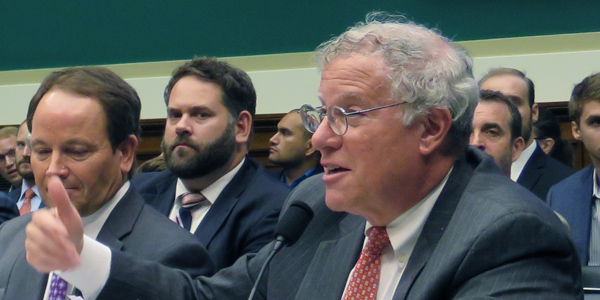By Rory D. Sweeney
VALLEY FORGE, Pa. — After months of debate in several transmission planning venues, PJM has begun discussing the role and significance of cost-containment assurances in bids for transmission projects under FERC’s Order 1000.
The debate has elicited frustration both from merchant transmission developers, who feel they should receive a competitive edge for sticking to a budget, and representatives of load, who say there is currently little incentive for developers to carefully count pennies in their estimates. A special session of PJM’s Planning Committee has held two meetings on the issue, the second of which last week focused on how cost-containment could be factored into the RTO’s planning.
Craig Glazer, PJM vice president of federal government policy, described a proposed four-stage cost cap review process — which includes examining cap provisions during project submission, evaluation, approval and construction — and outlined potential implementation issues. He preceded the discussion with a round of “Who Does What?” — a fictional gameshow he’s used before to highlight a lack of clear jurisdiction on transmission issues. (See Who Decides? Panel Highlights Blurred Jurisdiction on Tx.)
The submission process needs to include rationale for any exclusions to the cap in order to avoid “an exclusion so big it effectively makes the cost cap meaningless,” but also provides for confidentiality, he said.
“If you start exposing every element of the cost cap [publicly], all you’re doing is telegraphing to vendors how much you’re willing to pay for that portion of the project,” he said.
PJM’s “tentative view at this point” is to limit cost caps to construction costs that would include the internal cost of capital to finance the project, which is the “where the competition is” between proposals, he said.
“If somebody wants to submit … a life-of-the-asset project construction cost, we’re not going to consider that,” he said. “You can present that at FERC as part of your rate filing, but … don’t file it here.”
Transource Energy’s Dan Rogier agreed that any cost cap should focus on construction. “Those aspects of a project that are harder to track over time … should carry less weight than things that are known from a construction standpoint,” he said.
Another issue, Glazer said, is identifying who enforces the cap once it’s approved. PJM is not a regulatory agency, he said, so if it is put in charge, “we’re in this odd position of calling balls and strikes … for load,” he said. “I’m effectively the construction manager.”
He also made it clear that cost caps are just one component — and not the most important one — of PJM’s selection criteria and should be voluntary.
“You can’t make someone file a cost cap,” he said.
Representatives from several transmission owners, including Transource, ITC Mid-Atlantic Development, Duquesne Light and LS Power, agreed that cost caps should be voluntary.
However, LS Power’s Sharon Segner urged PJM to be more proactive.
“We think, from a PJM perspective, that this is a good development,” she said. “We think that cost caps should also be encouraged … because risks are being transferred and that has the potential to bring consumer benefits.”
The “main role” for PJM, she said, is to select the most cost-efficient, cost-effective project.
John Farber of the Delaware Public Service Commission said cost caps are not a “panacea,” but that the discussion is important for addressing a larger issue.
“There’s very little ammunition that customers have [today] to argue as to whether or not costs are reasonable to be recovered,” he said. “I think that’s a lot of the frustration that’s driving this. … Basically, in my personal view, the status quo is not working.”
Several transmission representatives, including Brenda Prokop of ITC and Tonja Wicks with Duquesne, agreed that PJM doesn’t have to use the same process as other RTOs, which have given significant weight to cost caps.
“We think that PJM has the right view on this. We don’t think that SPP and MISO have the right view on this,” Prokop said.
“I think to some extent we have a blank sheet to say to FERC what we want their role to be — and ours,” Glazer said.




